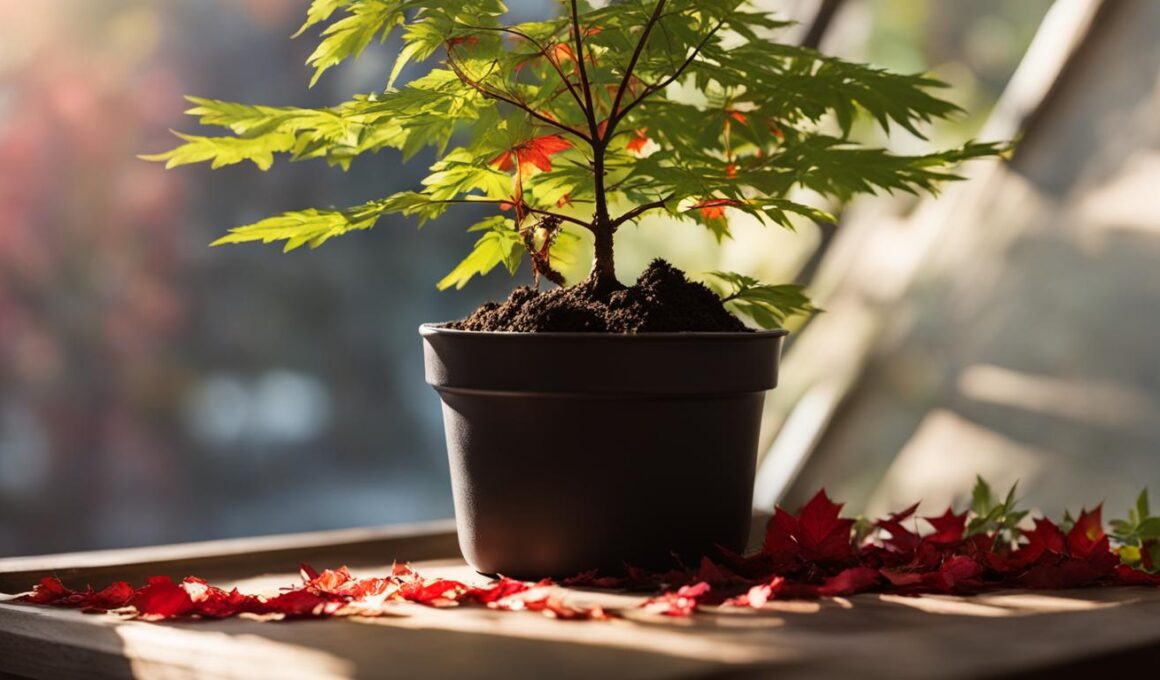If you’re looking to expand your garden without having to purchase new trees, propagating Japanese Maple trees is a great option. Japanese maples are versatile trees that can be grown in containers or planted directly in the ground. By learning how to propagate Japanese maples, you can grow your own beautiful trees and enjoy the satisfaction of nurturing them from the beginning.
When it comes to Japanese maple propagation, there are a few key factors to consider. First, you’ll want to choose the right variety and shape of the tree. Japanese maples come in thousands of varieties, each with its own unique characteristics. Whether you prefer a dwarf variety for a small garden or a tall, upright variety to make a statement, there’s a Japanese maple for everyone.
When propagating Japanese maples, you can use either seed or cutting methods. Seed propagation involves collecting seeds from the tree, preparing them, and planting them in well-drained soil. On the other hand, cuttings can be taken from existing Japanese maple trees and rooted to create new trees. Whichever method you choose, with the right techniques and a little patience, you can successfully propagate Japanese maples and watch them grow into beautiful additions to your garden.
Throughout this article, we’ll guide you through the process of selecting the right Japanese maple for propagation and provide step-by-step instructions on how to propagate Japanese maple trees. Whether you’re a seasoned gardener looking to expand your collection or a beginner eager to try your hand at propagation, this guide is here to help. So let’s dive in and learn how to propagate Japanese maple trees!
Choosing the Right Japanese Maple for Propagation
When it comes to propagating Japanese Maple trees, selecting the right variety and shape is crucial. With thousands of varieties to choose from, each with its own unique characteristics, you have the freedom to pick the perfect tree for your garden. Whether you have a small space or are looking for a statement piece, there is a Japanese Maple variety that suits your needs.
- Dwarf varieties: If you have a small garden or are planning to grow Japanese Maples in containers, consider dwarf varieties like ‘Red Dragon’ or ‘Little Princess’. These compact trees bring vibrant colors and elegance without taking up too much space.
- Weeping varieties: Are you looking to add a touch of cascading beauty to your garden? Weeping varieties like ‘Crimson Queen’ can create a shrub-like appearance, with graceful branches that drape downward.
- Tall, upright varieties: For a statement piece that demands attention, consider tall, upright Japanese Maple trees like ‘Bloodgood’, ‘Purple Ghost’, or ‘Coral Bark’. These majestic trees stand tall and proud, adding vertical interest to your landscape.
When selecting the right Japanese Maple for propagation, it’s also important to take into account the shape of the tree. Choose a shape that you find visually appealing, as it will determine the overall look and character of the tree as it grows.
By carefully selecting the variety and shape of the Japanese Maple tree, you can ensure a successful propagation process and create a stunning addition to your garden.
Image: A variety of Japanese Maple trees with different shapes and sizes.
Propagating Japanese Maple Trees
Propagating Japanese maples is a rewarding and cost-effective way to expand your garden and create a stunning landscape. There are two common methods of propagation: seed propagation and cuttings. Seed propagation involves collecting seeds from the tree, removing the wings, and soaking them in warm water to break their dormancy. Once the seeds have sprouted, they can be planted in a well-drained soil mix and kept moist until they establish strong roots.
Another method is propagating Japanese maples from cuttings. This is typically done during late spring or early summer when new growth is present. To start, select healthy, 6-inch long cuttings with several leaf nodes. Remove the lower leaves, dip the cut end in rooting hormone, and plant the cuttings in a coarse, moist potting mix. Maintain a warm and humid environment for the cuttings until they develop roots.
Once the cuttings have rooted, they can be transplanted into individual pots and grown until they are ready to be planted in the ground. With patience and care, you can successfully grow your own beautiful Japanese maple trees from cuttings. Remember to provide them with the optimal growing conditions, including well-drained soil, partial shade, and regular watering.
Propagating Japanese maples from cuttings is a time-consuming process, but the results are well worth it. By following these steps, you can enjoy the satisfaction of growing your own unique varieties of Japanese maples and adding beauty to your garden for years to come.
Can Hydroseeding be used to propagate Japanese Maple trees?
Yes, you can learn how to hydroseed at home to propagate Japanese Maple trees. Hydroseeding is an effective method for growing Japanese Maple trees from seeds or cuttings. The process provides ideal conditions for germination and growth, making it a popular choice for propagating these beautiful trees.
Is Japanese Maple a Flower That Blooms Only Once in 12 Years?
The Japanese Maple is a stunning tree known for its vibrant foliage, but it is not a flower that blooms only once in 12 years. This misconception may stem from the rare phenomenon of certain species of bamboo flowers blooming every 12 years, which is unrelated to the Japanese Maple.










